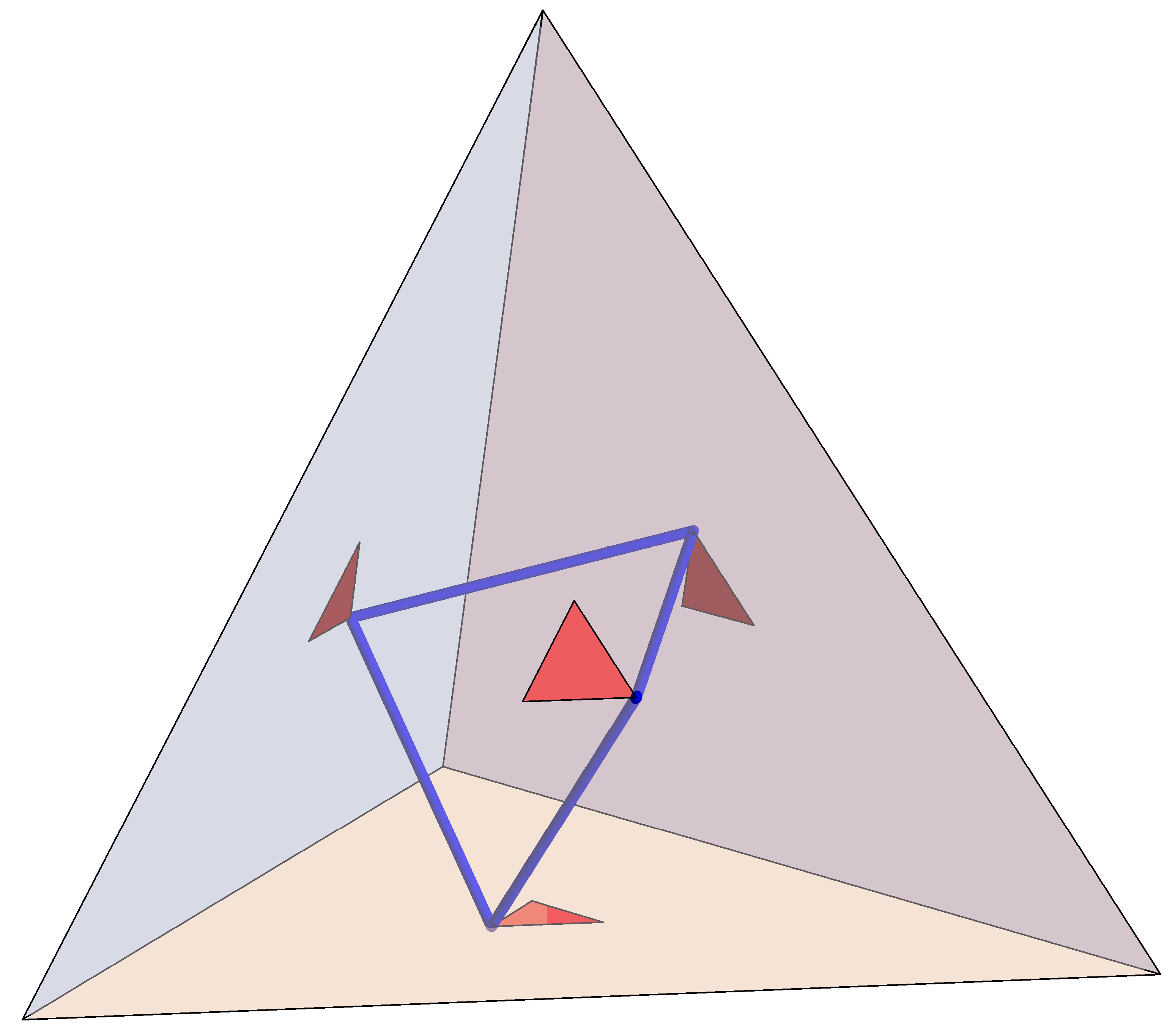Conway found a closed billiard-ball trajectory in a regular tetrahedron:

Image: Izidor Hafner
Since then Bedaride and Rao
Bedaride, Nicolas, and Michael Rao. "Regular simplices and periodic billiard orbits." Proc. Amer. Math. Soc. 142, no. 10 (2014): 3511-3519. JSTOR link.
proved this:
Theorem. In a regular simplex $\Delta^n \subset \mathbb{R}^n$ there exists at least two periodic orbits:
- One has period $n + 1$ and hits each face once.
- The other has period $2n$ and hits one face $n$ times and hits each other face once.
For $n=3$, Conway's path accounts for the first length-$4$ periodic path. I haven't yet figured out explicit coordinates for their second length-$6$ path. I'd be interested if anyone has drawn this $6$-path. In any case, my question is:
Q. Is there a complete inventory of periodic billiard paths in a regular tetrahedron?
Is it even known that there are only a finite number of such paths?
https://i.sstatic.net/UJCBD.jpg

